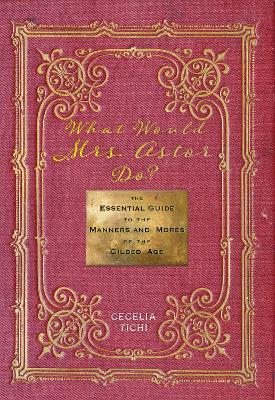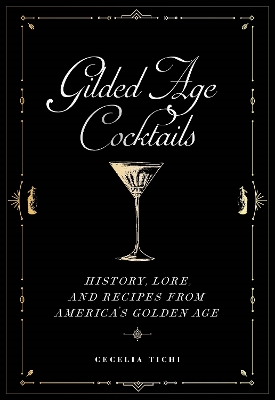Washington Mews Books
2 total works
A richly illustrated romp with America's Gilded Age leisure class-and those angling to join it
Mark Twain called it the Gilded Age. Between 1870 and 1900, the United States' population doubled, accompanied by an unparalleled industrial expansion, and an explosion of wealth unlike any the world had ever seen. America was the foremost nation of the world, and New York City was its beating heart. There, the richest and most influential-Thomas Edison, J. P. Morgan, Edith Wharton, the Vanderbilts, Andrew Carnegie, and more-became icons, whose comings and goings were breathlessly reported in the papers of Joseph Pulitzer and William Randolph Hearst. It was a time of abundance, but also bitter rivalries, in work and play. The Old Money titans found themselves besieged by a vanguard of New Money interlopers eager to gain entree into their world of formal balls, debutante parties, opera boxes, sailing regattas, and summer gatherings at Newport. Into this morass of money and desire stepped Caroline Astor.
Mrs. Astor, an Old Money heiress of the first order, became convinced that she was uniquely qualified to uphold the manners and mores of Gilded Age America. Wherever she went, Mrs. Astor made her judgments, dictating proper behavior and demeanor, men's and women's codes of dress, acceptable patterns of speech and movements of the body, and what and when to eat and drink. The ladies and gentlemen of high society took note. "What would Mrs. Astor do?" became the question every social climber sought to answer. And an invitation to her annual ball was a golden ticket into the ranks of New York's upper crust. This work serves as a guide to manners as well as an insight to Mrs. Astor's personal diary and address book, showing everything from the perfect table setting to the array of outfits the elite wore at the time. Channeling the queen of the Gilded Age herself, Cecelia Tichi paints a portrait of New York's social elite, from the schools to which they sent their children, to their lavish mansions and even their reactions to the political and personal scandals of the day.
Ceceilia Tichi invites us on a beautifully illustrated tour of the Gilded Age, transporting readers to New York at its most fashionable. A colorful tapestry of fun facts and true tales, What Would Mrs. Astor Do? presents a vivid portrait of this remarkable time of social metamorphosis, starring Caroline Astor, the ultimate gatekeeper.
A delightful romp through America's Golden Age of Cocktails
The decades following the American Civil War burst with invention-they saw the dawn of the telephone, the motor car, electric lights, the airplane-but no innovation was more welcome than the beverage heralded as the "cocktail."
The Gilded Age, as it came to be known, was the Golden Age of Cocktails, giving birth to the classic Manhattan and martini that can be ordered at any bar to this day. Scores of whiskey drinks, cooled with ice chips or cubes that chimed against the glass, proved doubly pleasing when mixed, shaken, or stirred with special flavorings, juices, and fruits. The dazzling new drinks flourished coast to coast at sporting events, luncheons, and balls, on ocean liners and yachts, in barrooms, summer resorts, hotels, railroad train club cars, and private homes.
From New York to San Francisco, celebrity bartenders rose to fame, inventing drinks for exclusive universities and exotic locales. Bartenders poured their liquid secrets for dancing girls and such industry tycoons as the newspaper mogul William Randolph Hearst and the railroad king "Commodore" Cornelius Vanderbilt.
Cecelia Tichi offers a tour of the cocktail hours of the Gilded Age, in which industry, innovation, and progress all take a break to enjoy the signature beverage of the age. Gilded Age Cocktails reveals the fascinating history behind each drink as well as bartenders' formerly secret recipes. Though the Gilded Age cocktail went "underground" during the Prohibition era, it launched the first of many generations whose palates thrilled to a panoply of artistically mixed drinks.

